Submitted by Tennesee Mahoney, Team Easyboot 2012 Member
We all know (directly or indirectly) the often painful results associated with a day or night in high heels. I remind myself every girls-night-out. Of course, I love getting spruced up, but I don’t wear pumps every day, and I guarantee I will never go jogging in them. Let’s face it, wearing high heels often leads to having sore toes and, depending on the shoe’s fit, usually rubs on our heels, which require band-aids.
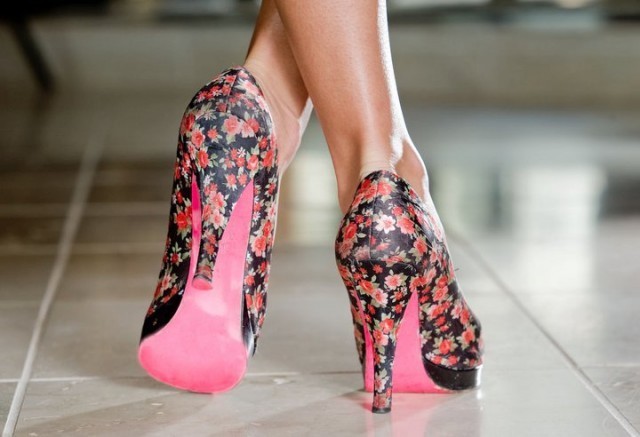
High Heels = Sore toes + heel rubs
It’s really no different with horses. This summer, one of the things that I learned, thanks to the bootmeister’s expert guidance and several patient equine athletes, is how to get heels done right. I have always had horses with naturally low heels, so trimming them was easy…I never touched the heels. Thanks to a barefoot lifestyle, they kept their heels right where they needed to be, or perhaps even a little low, so I would trim everything else and leave the heels as nature intended.
Over the last year or two, however, I have acquired several horses who have naturally higher heels and steeper angles. Even living and training barefoot, they have too much heel. The methodology of “don’t touch the heel” no longer worked for me, because they would get too high. There are many tell-tale signs of high heels, but for the average ‘booter’ there are several things that should easily catch your eye as you go to boot your mount: the plumb line through the cannon bone can be off.
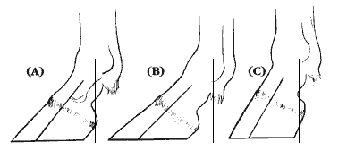
The angle that the boot’s shell creates with the horse’s hoof and hairline become reversed, the angle should open from the heel to the toe (see below,) and not be drastic.
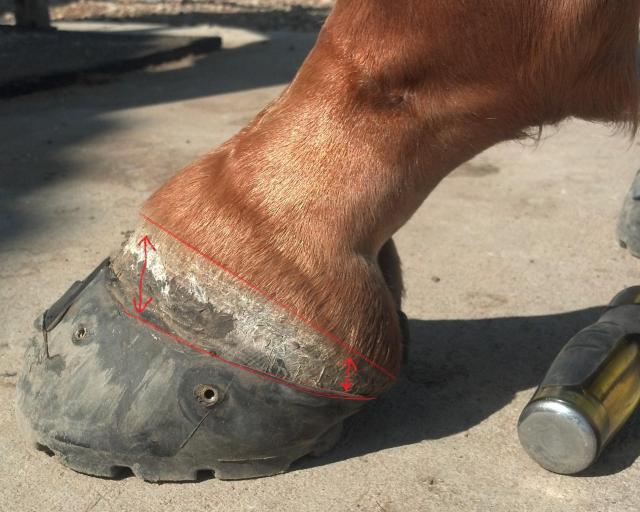
As opposed to an angle that opens from the toe to the heel (see below,) or anything drastic.
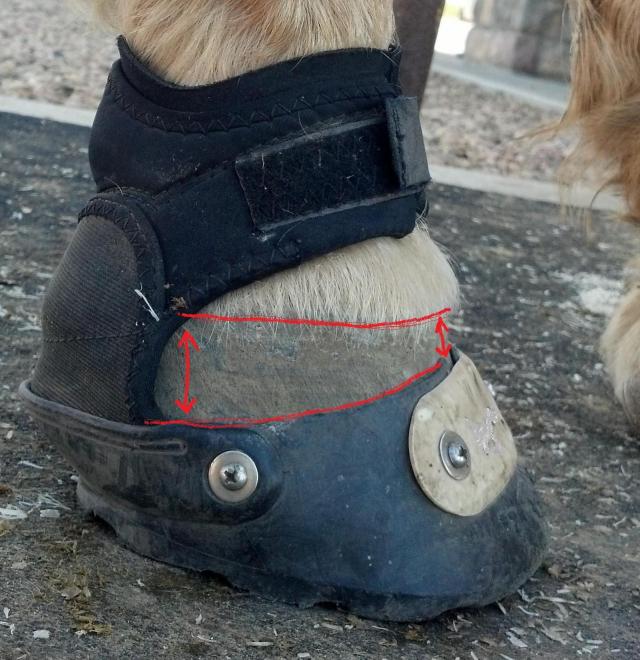
And the easiest sign to identify is killer heel rubs. (I honestly don’t have a picture of that for you!) Don’t blame the boot, it’s a boot fit/hoof trim issue and not a design flaw. All that said, every horse is different, and there are extremes at both ends (high heels and low heels,) that are completely natural, functional, and sadly, out of the average range of hoof angles/shapes that boots are designed to fit. You can see how high this horse’s heel bulbs are in the gaiter.
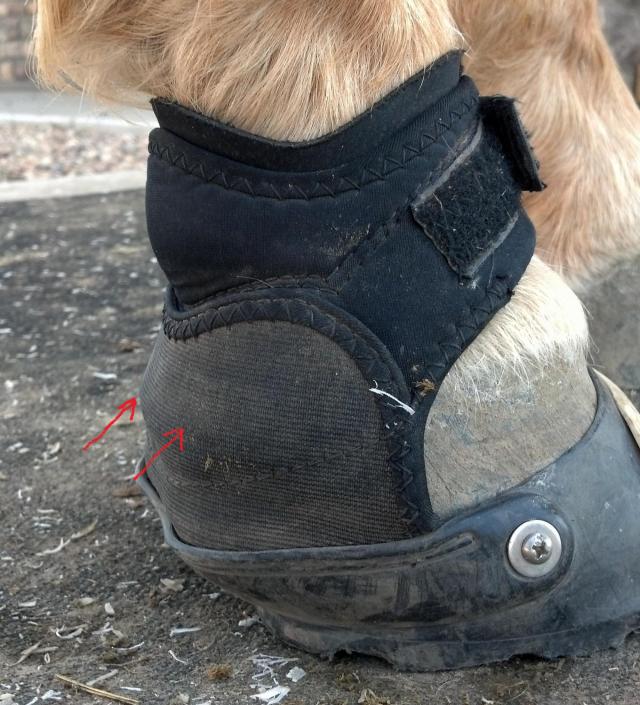
Here is one example I want to share with you. This horse was tender-footed, equally on both of his front feet before this trim, even in boots. His heels appeared to be high, but in his defense, he does have a naturally steep hoof angle and pastern. He may also be a candidate for the ‘wides’ (Easyboot Glove or Glue-On Wide.) Remember when looking at these that I am not a professional trimmer, I am learning, and have much to learn, so take it easy on me.
The sore-toed-high-heeled hoof.
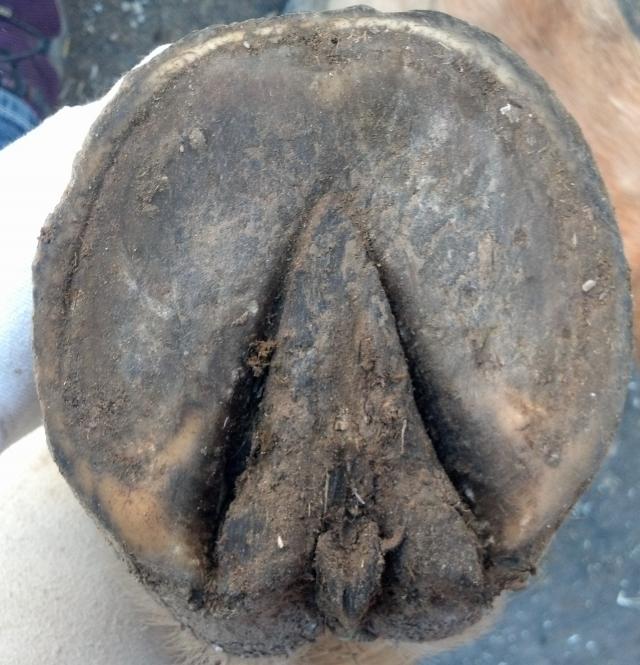
Clean up the frog a little, get your bearings.
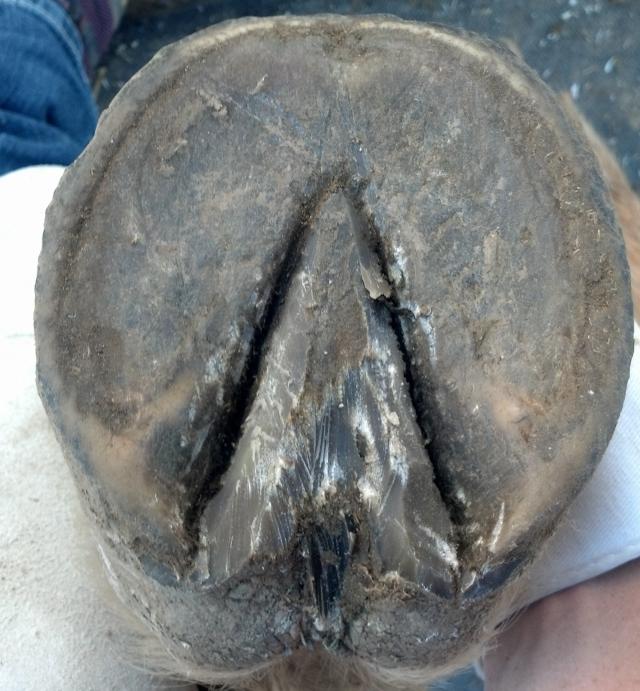
Clean up the sole and bars (he was load-bearing on his bars), I used a Merlin for this because he had nice hard sole, but it was thick enough in places that I was afraid it could cause pressure points.
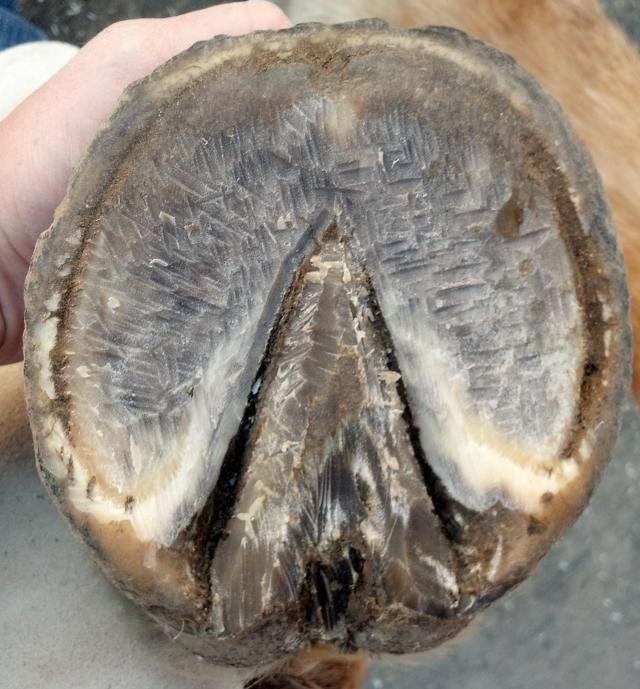
Knowing now how deep I could safely go, and knowing that his heels should be way back at the widest point of his frog, I did the rest of my trim.
I brought his heels down and back, and touched up the rest of the hoof wall to level everything out. I barely took any length off of the toe. Just behind the white line, significant redness became visible immediately, after a very light rasping, where the horse had been toe sore, so I used my hoof knife to relieve the pressure there. Having high heels was clearly making him bear too much weight on his toes, and his hoof was putting out excess callus on the toe to defend itself. You can also see where I had to dig out a small rock that was jammed up in his white line causing even more tenderness, there was still some debris up in the hole but that was as far as I felt comfortable digging, and he let me know that having the rock removed relieved some pain.
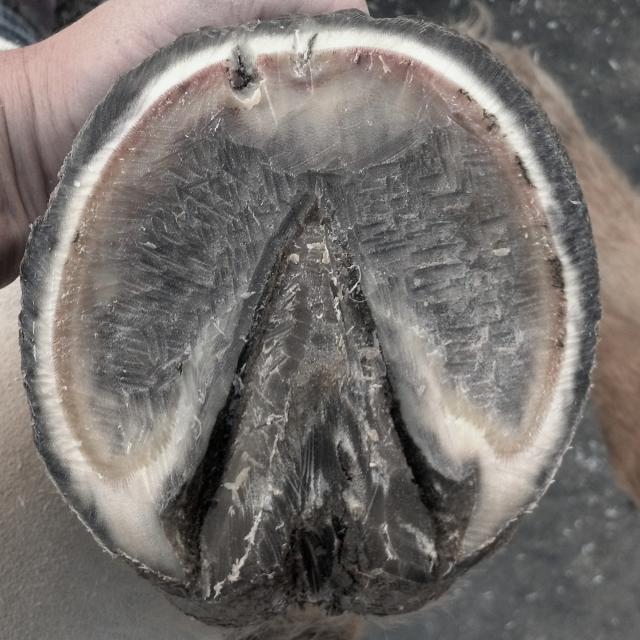
His other front hoof was the same story but without the pea gravel. The horse was sound after the trim, not tender on his toes any more. He even went on a ride. His Easyboot Gloves fit his heel bulbs better, so they didn’t rub, and were much less likely to flip off. Remember when adjusting heel height that you don’t want to do anything too drastic since you will be changing the “tension” on the horse’s tendons, so if you have a long way to go, do it in steps. This horse still has a little ways to go. Here is the previous image with lines drawn in.
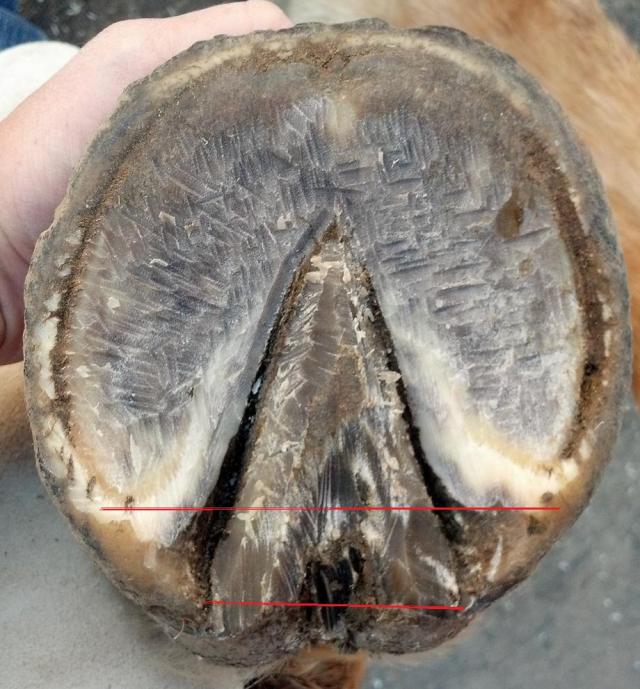
I finished this trim by beveling the edge (mustang roll,) and dripping some iodine into his frog and the pea-gravel-hole. But the moral of the story is; High heels lead to sore toes, and if you’re a booter, it will also lead to heel rubs, so if you are having either or both of those problems, you may want to double check your horse’s heel height, or kick off your high heels and put on some flip flops.

Tennesee Mahoney





